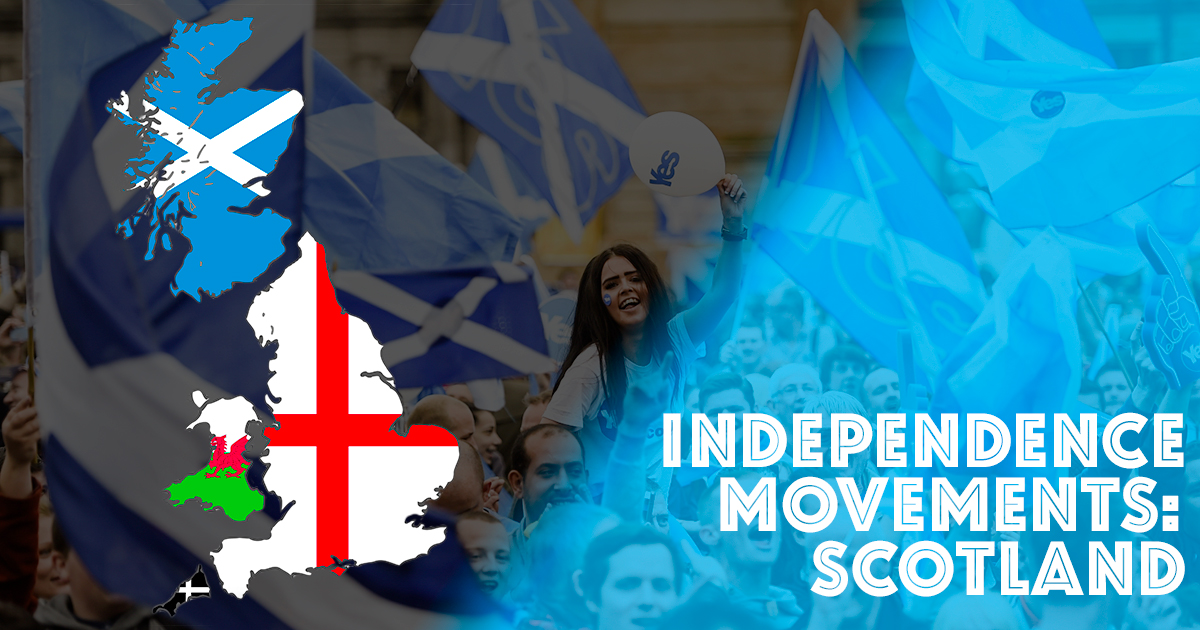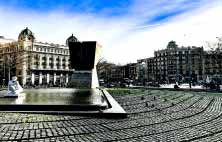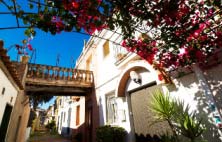The United Kingdom is experiencing a rise in independence movements. Thus, one of its four constituent nations organised — just as in Catalonia — a referendum on independence. But, unlike the Spanish region, it was the “no” that won in this case, rejecting any hope of independence for the separatist leaders.
If you come to visit the capital of Catalonia, we will help you to find the best long term rentals in barcelona. We offer apartments of different types, renovated and well furnished in all areas of Barcelona!
However, the question is still present and still scares the UK. It's even more present than before, since the vote in favour of Brexit greatly displeased Scotland who had a clear majority against leaving Europe. Scotland, unlike England and Wales, voted for the country’s continued existence in Europe.
History of the region
Scotland was once a sovereign state, yet we know that the autonomy it had was not complete nor enough for its people. Since as early as 1702, a series of conflicts broke out over the power exercised by the Queen of England over Scottish sovereignty.
The region still retained its "independence" until 1707. Indeed, the Act of Union was signed on 1 May of this year, which unified the Kingdom of Scotland to that of England, forming the Kingdom of Great Britain. This lead to the dissolution of the English and Scottish parliaments to create a new parliament of Great Britain.
This union would work quite well, even though Scottish identity remained strong and tended to stay stronger than the new British identity. Thus a desire for full autonomy was born, little by little leading to the creation of a true independence movement.
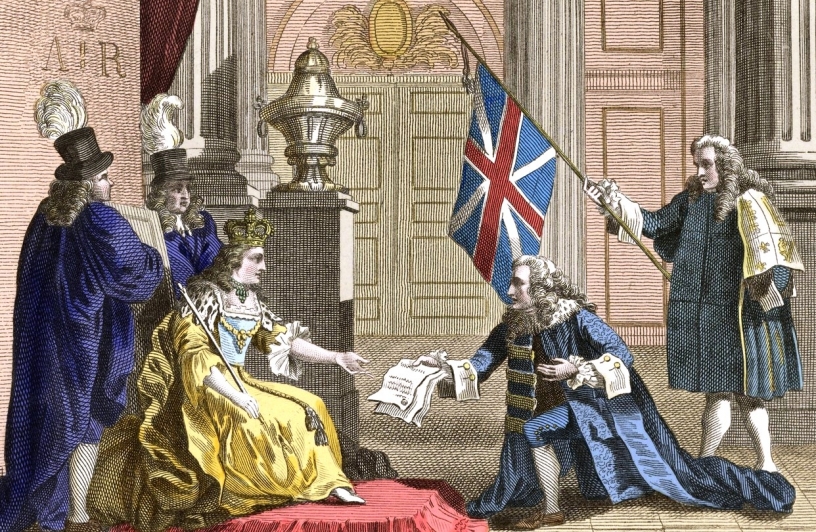
Excursions in Barcelona
To make the most of Barcelona and fill your trip with unforgettable experiences and emotions, we offer you the excursions through the Catalan capital organized by our friends - the GetYourGuide team. Choose your excursion and fall in love with Barcelona:
Independence in the region
It is on this strong, persistent Scottish identity that independence is based in the region. Thus, this desire for separation from the United Kingdom is based on the fact that Scotland has a culture of its own but has also had its own banking or legal system for some time, which makes it entirely possible for the region to function independently.
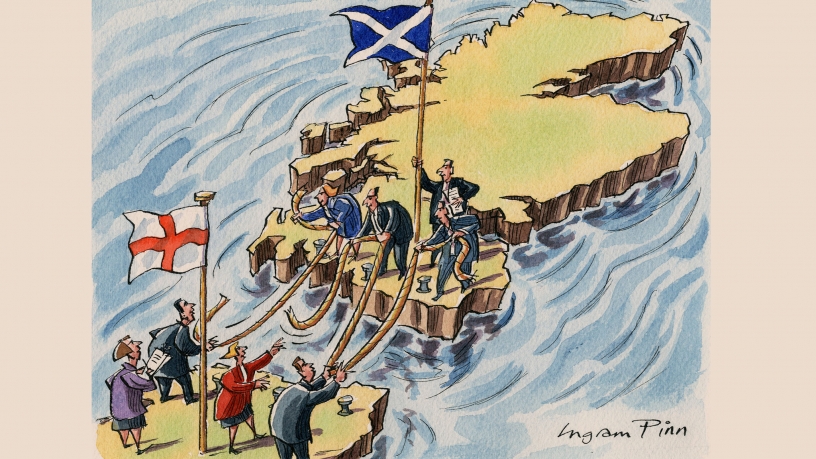
As we have seen, while a parliament of Great Britain was created in 1707, demands for the return of a Scottish Parliament could be heard as early as 1853. However, the question of Scotland's autonomy was not a priority until the beginning of the 20th century. Unfortunately the First World War came and the Scotland Issue departed from British concerns again.
In 1934, the Scottish National Party (SNP) was born. This political party had its ups and downs, managing to elect eleven of its members to the House of Commons in 1974. Back then it would mostly benefit from the support of Labour when in power, a referendum on the creation of a Scottish Parliament was then organised. However, “Yes” did not reach the required majority for the creation of such a body to take place.
The movement for Scotland to gain more autonomy, or even eventually independence, was going through difficult times, while Margaret Thatcher, who was strongly opposed to any discussion on this issue, came to power in 1979.
It was not until 1998 that we finally saw a Scottish Parliament following a referendum in which 75% of respondents had voted in favour of the devolution of powers. The Scottish National Party became more and more present to that point where in 2007, it happened to form the first independentist government of the region (even if it was a minority).
The changing political shape of Scotland: General Elections... http://t.co/ly8eCiqBNI pic.twitter.com/juArcEI5Tn
— OnlMaps (@onlmaps) 25 August 2015
With the following and much stronger victory of the SNP in the 2011 elections, the issue of independence was well and truly back on the table. David Cameron, the British Prime Minister at the time, signed the Edinburgh Agreement with Alex Salmond — the Scottish Prime Minister — on 15 October 2012, to begin the organisation of a referendum on the independence of Scotland in 2014.
Current situation
As mentioned, the Scottish people voted as a majority in the 2014 referendum to keep the region within the United Kingdom, leading to the resignation of Prime Minister Alex Salmond.
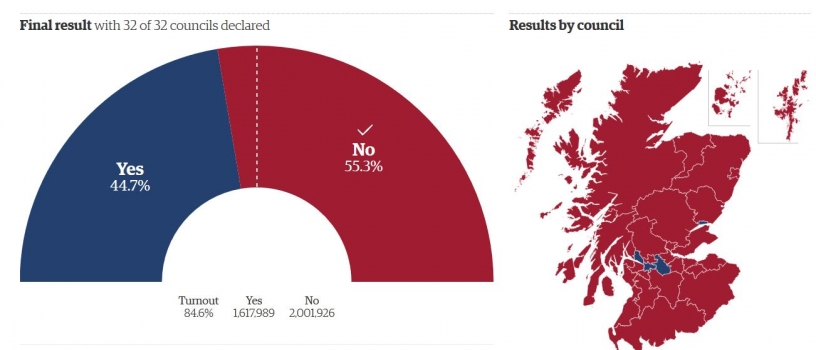
Nicola Sturgeon is now at the head of Scotland, who despite the failure of 2014, renewed the campaign for an independent Scotland. Even more so now as Brexit triumphed in a referendum held throughout the UK in June 2016.
A large number of Scots voted in favour of keeping their country in the European Union, unlike the rest of the United Kingdom. The final result has therefore greatly displeased the region. Scottish separatists have promised to hold a second election for independence in autumn 2018, despite their failure in the last general elections.
Position taken in relation to the Catalan conflict
The current Conservative Government of the United Kingdom has shown its support for Spain and Rajoy's Conservative government, like most European countries.
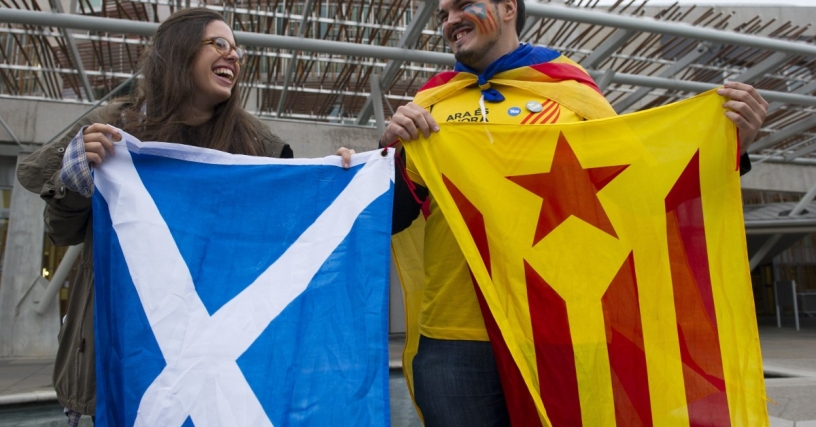
However, Nicola Sturgeon — First Minister of the Scottish government — has meanwhile demonstrated a more balanced stance to the Catalan separatists led by Carles Puigdemont. Indeed, Sturgeon has found it “worrying that any state may deny the right to democratically express their will”.
She also condemned the police violence that took place during the referendum in a tweet.
2/2 and call on Spain to change course before someone is seriously hurt. Let people vote peacefully.
— Nicola Sturgeon (@NicolaSturgeon) 1 October 2017

